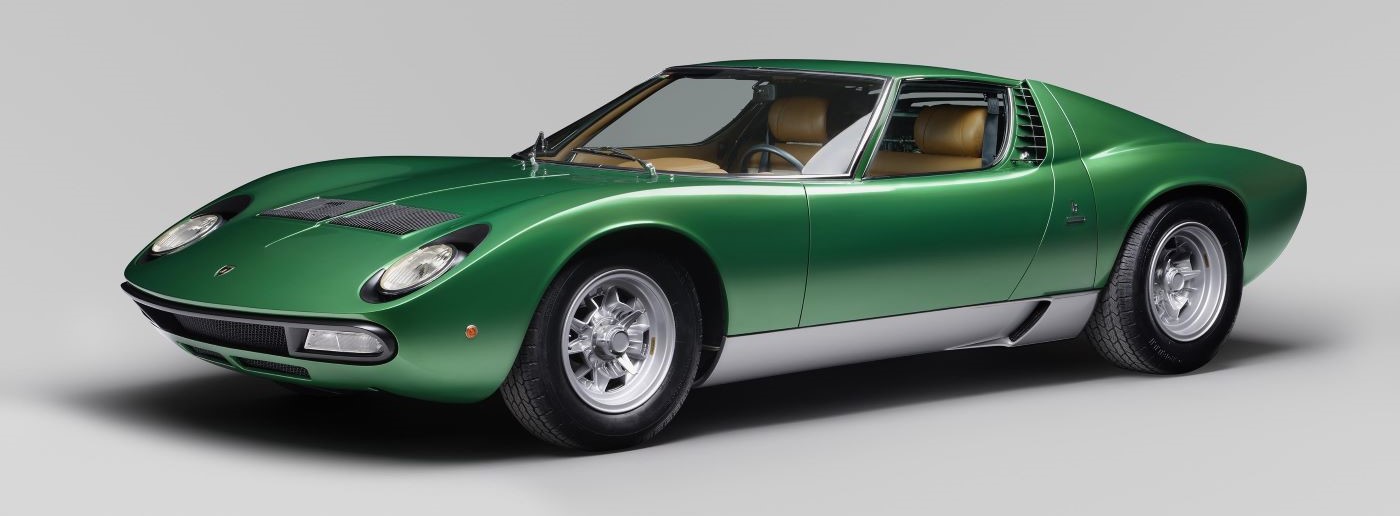
As the story goes, when Lamborghini saw the project he approved it immediately, probably shocking the two very surprised designers, who certainly didn’t dare hope for such a happy ending to their proposal. For once, however, Lamborghini was wrong in his forecast: he declared that a car like that should be built because it would be good advertising for the make, even though it would clearly never sell more than fifty worldwide. Every so often, even the best make mistakes.
The chassis was completed rather quickly, and it was exhibited at the Turin Auto Show in October 1965. One person who believed in that chassis, and above all in Lamborghini’s capabilities was Nuccio Bertone. The Turin-based coach-builder was an expert on cars and engines, and as soon as he saw the chassis he approached Lamborghini and said, “I’m the one who can make the shoe to fit your foot”. The two shook hands, and this marked the beginning of an extraordinary adventure.
It was up to Marcello Gandini to interpret Bertone’s ideas, creating a unique and sensational body for the Bologna-built chassis, something that – in its blend of aggressiveness, elegance, originality and class – was to prove unrepeatable: the Miura was born.
No one actually knows why it was given this name. Above all, Ferruccio never wanted to disclose why he came up with the analogy to this breed of extraordinary and powerful bulls, a Spanish bullfighting legend. For someone like him, a man who was born under the sign of Taurus and had used this symbol for the proud logo of all his industrial activities, naming one of his cars after a fighting bull must have come naturally. If anything what is surprising is the fact that, in choosing the first name for his first car that would have enormous international impact, he instinctively chose the best and most appropriate name. According to experts, Miura bulls are by no means ordinary animals. They are the strongest of all fighting bulls but, above all, they are the most intelligent and fiercest ones, in the military sense of the word. In their books, bullfighters often talk about the unmistakable gaze of the Miura bull: the gaze of a true fighter, shrewd and powerful. The name was particularly apt and, with just five letters, it was also very immediate.
Work to ready the Miura immediately proceeded at a feverish pace. Gandini later recounted that from October to February, everyone worked around the clock, seven days a week, like madmen. A major event was coming up and no one wanted to miss the opportunity to present this now model: the 1966 Geneva Motor Show. And therein lay the miracle: that the chassis presented as a completely experimental prototype in the autumn of 1965 had become the most stunning road car in the world – in just four months. The Miura reigned supreme at the Motor Show in Geneva.
Enthusiasm was sky-high and, in a sensational coup, Lamborghini managed to raise it even higher by bringing the Miura to the Monte Carlo Grand Prix, the most exciting weekend for sports cars in general and for top-level Italian ones in particular. The orange Miura he parked in front of the Hotel de Paris that Saturday afternoon attract so many oglers that they completely jammed the square in front of the Casino, arousing even more enthusiasm, interest and orders. It was, quite simply, a runaway success.
The year was 1967, and Lamborghini could now look towards the future far more optimistically. The flood of orders for the Miura pumped new cash into his company, but above all it generated unparalleled interest and publicity. The Miura gave the company unique prestige.
The presentation of the Miura Roadster at the Brussels Car Show in 1968 also helped test customer reactions to the possibility of introducing a convertible to the range.
The most important operation undoubtedly involved approving an entire series of modifications, which were effectively required for the Miura, and incorporating them into a single new version. The outcome was the S version, created in November 1968.
Its presentation was naturally a must at the Turin Auto Show that year, and the new Miura offered customers a 370-hp engine, i.e. 20 more than the previous version. It also featured electric windows, the whole interior was more luxurious by finished and options included air conditioning (an innovation bordering on the extravagant, at least in Europe) and natural leather upholstery. Only the chrome finish on a few minor exterior parts and a small metal S shaped like a lightning bolt, mounted on the tail panel of the car, distinguished the new version of the Miura from the old one.
Between 1966 and 1969 (475) units of the 350 HP Miura were produced. But the success story did not end there: The Miura was first developed further into the Miura S with 370 HP and later into the Miura SV, which had wider mud guards and a greatly revamped 385 HP engine with separate lubricating systems for engine and gearbox.
At its debut the Miura was the fastest production car in the world: With a top speed of 280 kph and an acceleration from 0-100 kph in 6.7 seconds the Lamborghini Miura set new standards in the sports car segment.
Very few cars managed to change the automobile world like the Miura. With its central engine and fascinating body designed by Marcello Gandini for Bertone, in 1966 Lamborghini redefined the concept of Super Car. Sceptical about the possibility of selling a large number of this sports car, Ferruccio Lamborghini decided to produce it on a small scale.
Miura Specifications
- Production numbers ………….1966–1972 (764 built)
- Body style(s) ……………………..2-door coupe
- Layout ………………………………Rear mid-engine, rear-wheel drive
- Engine(s) ………………………….3929 cc V12, 4-litre displacement
- Max. speed: ………………………285 km/h
- Transmission(s) ………………..5-speed manual
- Length ……………………………..4,260 mm (167.7 in)
- Width ……………………………….1,760 mm (69.3 in)
- Height ………………………………1,050 mm (41.3 in)
- Curb weight ………………………1,292 kg (2,848 lb)
Gallery

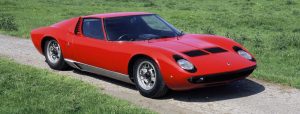

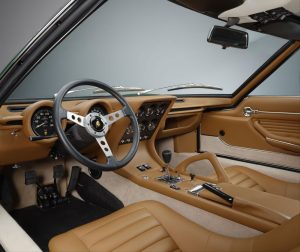



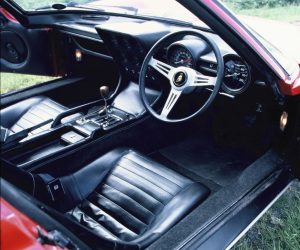


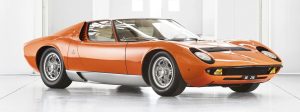


You must be logged in to post a comment.